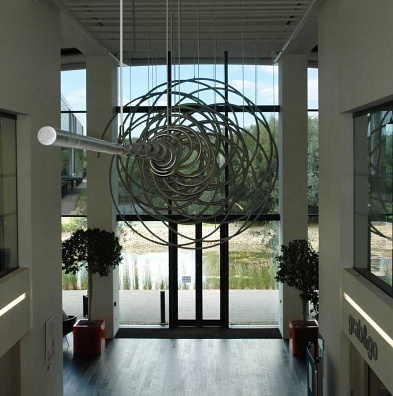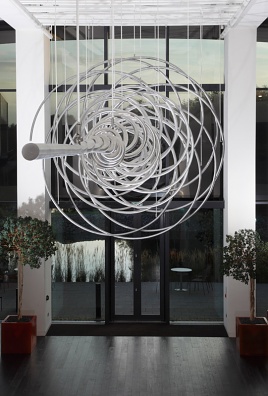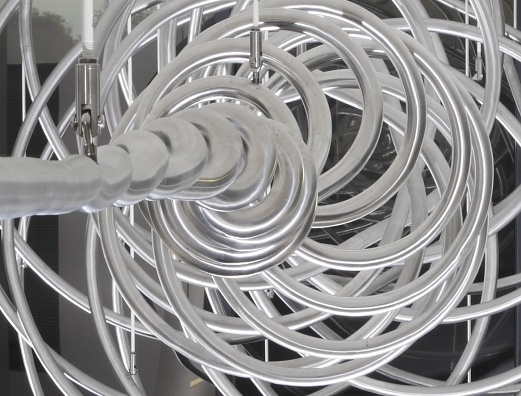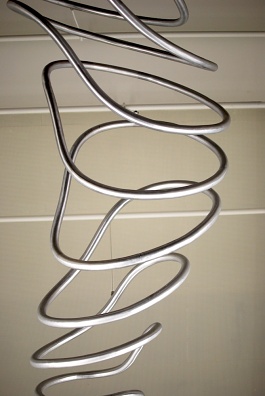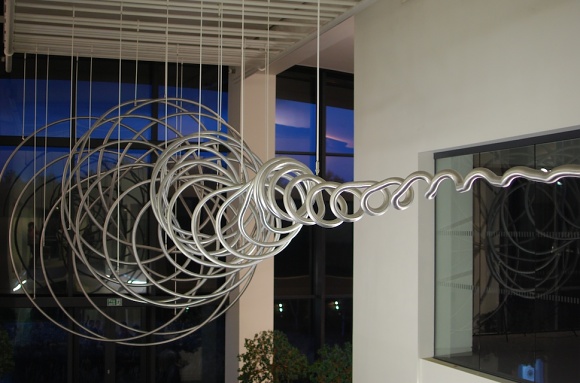FRACTION (9:8) is a permanent site-specific commission by Conrad Shawcross created for the atrium of the new Sadler Building in the Oxford Science Park. Suspended from the ceiling and over 14 metres in length, the work continues the artist’s investigation into the mathematics of music and harmony. The sculpture is a three-dimensional interpretation of the chord of ‘The Second’, which has a 9:8 ratio as it falls towards silence.
Visualisation of this spectrum was achieved with a machine based on a Victorian Harmonograph where two pendulums record the oscillations. The three-dimensional representation was constructed from sand cast aluminum. The work was short-listed for the Marsh Sculpture Award in 2011.
Charles Young, Senior Bursar of Magdalen College, Oxford, explains the commission's background:
'Magdalen College, Oxford and Prudential shared the ambition to commission a major work of art that would attract people to Oxford Science Park. Initially it was anticipated that this would be a large piece placed in the external landscaping that could easily be seen by members of the public and identified as an emblem of the Science Park. Completion of the Sadler Building, which houses a restaurant, a bar and meeting rooms, all of which can be used by the public, moved our focus to commissioning a work to hang in the entrance of that building. Guided by Modus Operandi we ran a competition which resulted in the choice of Conrad Shawcross whose early ideas for FRACTION (9:8) impressed us. FRACTION (9:8) breaks new ground in its scale and innovative use of materials. We believe it brings a particular pulse of creative energy to the Oxford Science Park, a view that is shared by many of the people who come to see and enjoy it.'
A short time lapse of FRACTION (9:8) being installed is available here:
